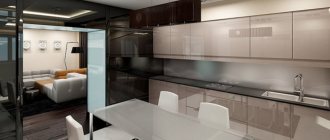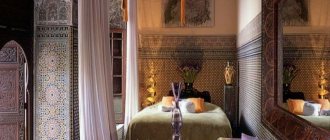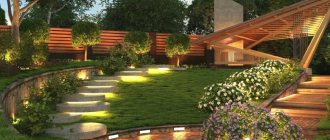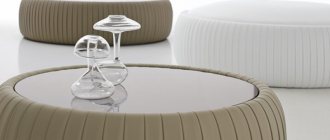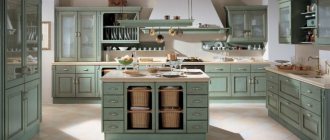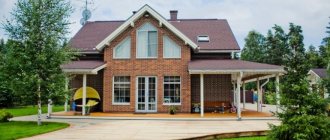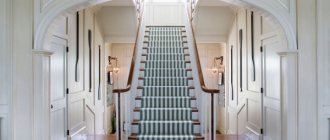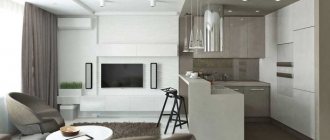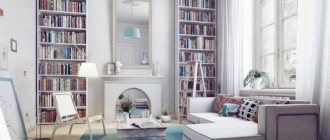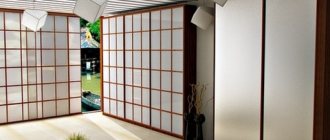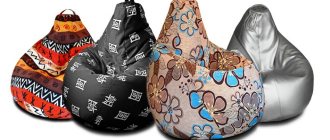Moroccan motifs
In the article “Interior in African style” we talked about the features and main features of the so-called “pan-African style”. The interior style typical of one of the African countries is of great interest. We are talking about Morocco. Moroccan interior style is usually distinguished from the general African style. The interior style of Moroccan homes is bright and original, because two cultures are harmoniously intertwined in it: African and Arab.
In addition, the influence of Roman, Greek, Spanish, and Muslim cultures was felt. This mixture makes Moroccan interiors unusually colorful and attractive. The interior in the Moroccan style is compared to Arab beauties - sultry, alluring and mysterious.
Interior in Moroccan style: colors
The Moroccan interior contains colors characteristic of the African style, that is, the colors of the nature of the black continent: desert, scorching sun, shady jungle, fires in the African night. These are sand, orange, terracotta, red (various warm shades of red), brown, swamp green, etc.
However, in addition to this, Moroccan interiors use colors characteristic of the Arabic style: pink-orange, gold, scarlet, fuchsia, royal blue, dark purple, burgundy, etc.
Moroccan interiors are also influenced by Asia, so they feature a lot of white. Sometimes white color is present in the decoration of both walls and floors at the same time. Dark furniture and bright textiles on a white background create a contrast typical of African design.
This mixture underlies the polychrome (multicolor) characteristic of Moroccan interiors. Another color feature of Moroccan-style interiors is the use of various shades of blue (natural, associated with the color of the sky) for finishing floors, walls, and ceilings.
Characteristic features of Moroccan style.
- A deft interweaving of light and bright shades;
- Abundance of textiles;
- Luxurious floor carpets;
- Hand-painted walls – most often with patterned motifs;
- Arched door and window openings;
- Niches in the walls;
- Forged elements;
- Carved motifs;
- Stained glass on the windows;
- Mosaic on the walls and floor;
- Columns;
- Use of leather;
- An abundance of clay and ceramic objects.
Moroccan interior decoration.
We should start with a discussion of a suitable shade range, among which the sun-scorched range is in particular demand: yellow, green, orange, terracotta, sand, olive. But beige, white, blue, pink, burgundy, discreet silver and brown tones are also a frequent guest here. Most often, in such rooms, a warm palette of tones is used, visually warming and unobtrusive. Moroccans consider warm tones to be the most cozy and harmonious, and since this country is incredibly hot, accessories with a cold undertone are also required, giving a feeling of coolness on another hot day.
1. As for wall decoration, most often they are covered with decorative plaster or painted. Among the interesting things I would like to highlight are the hand-painted walls depicting characteristic oriental motifs, as well as the mosaic layout. The shade of the walls can vary within the white range and just a pastel palette.
2. According to tradition, the floor is laid with tiles; it can be simply a plain covering or with some kind of intricate pattern. The floor can also be covered with parquet or treated boards.
3. The ceiling can be supplemented with stucco or hand-painted; in addition, this style is characterized by the use of wooden load-bearing beams or simply decorative beams.
Furniture in Moroccan style.
Furniture in this style is quite exotic, most often wooden or metal. If the choice fell on wood, then it is recommended to use thuja, cedar, beech, and argan. And of course, thematic furniture is decorated with carved patterns, which, by the way, are not the only decoration method; painting is often used, and forged inserts are also used.
The sofa in the living room should be not just large, but very large, designed for a serious group of people. It can be a corner sofa or a stylish one with a round shape. And don’t forget about the abundance of decorative pillows with tassels and fringes. The tea table should not be high, but spacious.
The bed in the bedroom can be wooden with a luxurious headboard decorated with wood carvings. Also, the bed can be made of wood, and accordingly decorated with forged elements. The bed should be covered with a chic satin bedspread with elegant embroidery, and a lot of different decorative pillows should be arranged in a beautiful way. The bedside tables and wardrobe should match the style of the bed. By the way, the cabinet can be built into a wall niche, ideally in an arched shape.
In the kitchen it is better to install a set made of natural wood, amber or brown in tone, again complemented by carvings and forging. The dining table must certainly be massive, as well as the chairs.
Decor with Moroccan touches.
This type of interior design is very fond of various decorative items, among which I would like to highlight:
- Forged chandeliers of round shapes;
- Large antique chests;
- Caskets with carved elements;
- Hand painted vases;
- Volumetric wooden picture frames;
- Dishes in rich tones;
- Lots of cute pillows;
- Jugs made of brass;
- Wall lamps with colored glass;
- Floor carpets;
- Curtains with embroidery;
- Tiebacks - tassels for curtains;
- Carved screens;
- Tall brass candelabra;
- Aroma lamps;
- Cacti in pots.
Decorative items will allow you to recreate that very charming atmosphere of the East, which will immerse Moroccans in the natural life every day.
Moroccan style in the interior: decoration
Floors. Most often, stone floors are found in Moroccan interiors , due to climatic conditions. The stone is cold, but on hot days and sultry nights the coolness of the floor increases the level of comfort.
If the coldness of a stone floor scares you, you can choose a tile or wood laminate. In Moroccan interiors, wooden floors are also not uncommon: mostly rough boards and stacked parquet (wooden modules of different colors are laid out in a certain way to create a beautiful ornament). But if we are talking about styling, laminate .
However, the optimal solution for the floor in a Moroccan interior is still warm-colored porcelain tiles (brown, terracotta, beige). The size of the tile can be different: large, medium and very small (mosaic).
Additional decorative tiles and mosaics are used to create a floor pattern. The tiles themselves, laid on the floor, are most often not monochromatic, but with ornaments.
There must be carpets on the floors in the living room and bedrooms. You can, of course, lay a carpet with an ornament, but it is better to lay a stone or wooden covering on the floor and decorate it with a small Arabic-style carpet.
Walls. In living rooms and hallways, the walls are most often plastered. In Morocco, decorative textured plaster is used to decorate walls, after application of which the walls become like marble. Plaster can be ordinary. Then the plastered walls are painted with colored or snow-white paint.
In wet rooms and front halls, the walls are decorated with bright mosaics that form a Moroccan pattern .
Bathroom element in a Moroccan-style home
In the foyer and living rooms, the walls are decorated with ornamental paintings in the Moroccan style .
Wall decor in a Moroccan interior
Ceiling. The ceilings in Moroccan houses are very high. They are painted in one of the commonly used colors. Traditionally, in common rooms the ceiling is blue or blue - it symbolizes the sky. A border is made between the wall and the ceiling - it can be a mosaic, painting or lace stucco.
In expensive Moroccan interiors, the ceilings can be wooden - carved or painted with Moroccan ornaments. The work is difficult and very expensive, but the result is amazing.
In poor houses, branches and twigs (eucalyptus, oleander) were laid across the beams. Often they were covered with lime mortar, less often they were left in their original form. Such ceilings are also created in our time to introduce ethnic features into the interior.
What else distinguishes a Moroccan-style interior? Firstly, there are numerous niches in the walls. Lamps or candelabra with candles, as well as books, engravings and other decorative items are installed in the niches. The niches are either arched or pointed , although they can also be rectangular.
Some of the niches can be covered with patterned forged grilles (you will get a kind of false windows). However, metal grilles can become an independent wall decor in a Moroccan interior - you just need to hang them on the wall.
Other openings in the walls—windows and doors—are also arched and lancet. The doors are patterned, decorated with carvings and stained glass.
The inside of the windows can be decorated with carved wooden shutters and forged grilles.
In a Moroccan- style interior, there should be few right angles.
The favorite shape is the one that resembles a keyhole.
Creating an oriental fairy tale: materials and finishing
The walls are best covered with Moroccan plaster (“tadelakt”), which is always distinguished by warm shades and allows you to create aristocratic, glossy surfaces. But as an alternative, if it is not possible to use “tadelakt”, the walls can be painted a uniform color or covered with suitable textured wallpaper, and decorated with a carved frieze at the junction with the ceiling. Hand-painted paintings, original Arabic patterns and ornaments are also welcome on the walls.
The ceiling is often plastered, however, if it is high, it would be appropriate to decorate it with wooden panels or.
Moroccan-style floors are traditionally tiled with mosaics. But you can also use ceramic tiles, parquet boards, parquet and laminate.
materials, furniture
The furniture is predominantly wooden, decorated with carvings, inlays, gilding or covered with mother-of-pearl.
Wooden furniture is usually dark - it is distinguished by a rich dark brown or red-brown color. Light ivory furniture is less common. Lancet shapes are characteristic not only of architecture, but also of furniture.
A Moroccan interior is unthinkable without patterned forging - these include tables, banquettes, benches, and much more.
Open living room in a real Moroccan courtyard
The sofas and armchairs are not too bulky. The upholstery can be different: plain neutral, plain bright or with an ornament. Sofas with plush upholstery will be very welcome. Sofas almost always have a lot of pillows with embroidery and tassels. Pillow covers are plush or silk.
Moroccan motifs in the interior
It is difficult to imagine the interior of a Moroccan-style living room without a large number of soft seats: one or two large or several small sofas, armchairs, ottomans, couches, couches, etc. Lounge furniture (sofas, benches) can also be wooden, including lattice or carved, covered with soft mats.
A long, low stand will fit under the TV in the living room. And instead of traditional tables, cabinets, and chests of drawers, wooden chests with carvings and paintings are often placed.
The Moroccan bedroom is an Arabic chillout, only instead of low beds there is a relatively high bed, but not too wide. The head of the bed is often decorated with fabric draperies, and a “tent” is often erected over the bed itself.
The shape of a wooden headboard can also be pointed. Chests can be placed near the bed instead of bedside tables.
In Moroccan-style interiors, the tops of low wooden tables and the lids of cabinets and chests of drawers are often decorated with multi-colored mosaics. When creating a Moroccan interior in a modern apartment , you can update old pieces of furniture, giving them an African-Arabic gloss . To do this, it is enough to update the furniture, covering it, if necessary, with stain and varnish with a mother-of-pearl effect, replacing the fittings and covering the lid with mosaics. The end part of the tabletop or lid can be covered with leather or braid with an ornament, decorated with tassels in the corners.
Clothes in Moroccan style
The traditional costume of Moroccan women depends on religion and family traditions. In many cities you can meet oriental beauties with already Europeanized taste, but there are also fans of ancient traditions. The characteristic clothing of women in Morocco is the dress. A kaftan is a single dress, and a takshit is a double dress. Dresses on the front are decorated with a row of small buttons, silk or beaded embroidery, and belted with galloon - a narrow patterned belt that emphasizes a woman's waist. Another element of the national costume is the djellaba, a robe that hides the beauty’s figure from head to toe. The frock coat is fastened with a number of buttons and is complemented by a pointed hood, which often saves from weather conditions. Djellaba is unisex clothing, that is, intended not only for the fair sex, but also for Moroccan men. Color and originality - these are the features that have captivated modern designers.
Moroccan style on the catwalk
The most ardent admirer of Moroccan style is His Majesty in the world of high fashion - Yves Saint Laurent. It is in his spring-summer collections that Moroccan moods and motifs predominate.
Blouses whose cut resembles a caftan, floor-length dresses with a simple loose cut, complex cut of skirts, the use of natural fabrics, and intricate patterns are the distinctive features of the designer collection.
Simple and feminine dress with colorful accessories
To add modern features to clothes, fashion designers are experimenting with a combination of textures, complementing clothes in this style with inserts of translucent fabrics and lace. Such outfits attract girls of all ages. Light chiffon tunics, long dresses made of natural fabrics with embroidery, colorful skirts are simply irreplaceable if you are going on vacation to the sea.
Lightness and beauty
Just imagine: a gentle breeze, hot sun, hot sand and you - an oriental beauty in a flowing outfit fluttering in the light wind! An ideal concept for a romantic photo shoot. But don’t think that clothing in the original Moroccan style is monotonous. A monochromatic set of narrow pipe trousers and a long caftan can be safely worn to work in the office. Dresses of bright colors, embroidered with stones, rhinestones, beads or silk embroidery can become original evening dresses in their splendor.
Plain set for work and for walking
textiles, decor, accessories
Moroccan interiors are distinguished by the use of a large amount of textiles. Lots of sofa and floor pillows, bolsters. Walls and ceilings can also be draped to create the effect of an Arabian tent. Curtains in Moroccan interiors are luxurious - they always attract attention.
There are handmade carpets on the floors and walls.
In a Moroccan-style interior, it is imperative to include different types of lamps: ceiling, floor, wall, installed in lancet and arched niches. Lamps are most often forged or on a copper frame, often with stained glass inserts. A Moroccan lamp is a small work of art and a luxurious decorative element.
Accessories and decorative items for Moroccan interior:
- Brass trays and jugs
- Hookah
- Ceramic vases with ornaments
- Expensive vases covered in leather, decorated with brass or gilding
- Painted boxes
- Interior plates and dishes made of wood and copper that hang on the walls
- Arched and lancet mirrors in wooden or copper frames.
Moroccan interior plates
Moroccan ornaments
This is what Moroccan style in the interior is like: fabulous, mysterious, attractive.
Author: Sonya Solovey
Basic principles
Morocco is a country with a rich history and preserved religion. Its residents still revere the culture and traditions of their ancestors. The fusion of cultures of the mysterious East, wild Africa, as well as intelligent and practical Europe, is the leitmotif of the style and principles of clothing. The formation of the direction was influenced by such cultures as Greek, Roman, and Muslim. Let's look at the main features of the style:
- Color spectrum. A riot of colors, contrasting combinations of variegated and natural shades - all this is welcome in clothing.
A riot of colors in every shop.
The favorite colors of Moroccan women are colors associated with the hot sun and sultry desert. These are warm shades of red, natural sand, cobalt, rich brown, terracotta.
Favorite shades of the style are also snow white, sapphire blue, rich burgundy, amethyst, purple, emerald green.
Blue City Chefchaouen (Morocco)
- Prints. Oriental floral patterns, paisley, arabesque, animalistic African prints, geometric motifs. The peculiarity of the pattern in the Moroccan style is its ornateness and complexity of weaves. It is the original patterns that make it possible to convey as accurately as possible the spirit of the country - the progenitor of the style.
- Fabrics. Morocco is a region with a hot climate, so fashionistas choose natural, light, flowing, even cold fabrics for everyday wear. Linen, cotton, and cambric are especially popular. For a festive outfit in the Moroccan style, brocade, organza, velvet, heavy silk, and glossy satin are most often used.
Colorful goods on the shelves of a street shop
- Decor. An explosive cocktail of many cultures gave rise to special principles for decorating outfits. Dresses, caftans, tunics are generously decorated with semi-precious stones or their imitation, embroidered with beads, sequins, and hand-made silk embroidery.
- Cut. Eastern women are the embodiment of modesty and mystery. Even in modest clothes, beauties attract admiring glances. The cut of dresses in the Moroccan style is distinguished by its laconic simplicity of lines and smooth silhouette. Every detail emphasizes femininity, modesty, and attractiveness.
- Practicality. Thanks to functionality, practicality and naturalness, any girl feels free and comfortable in such clothes.
The styles are usually closed, modest, as a tribute to culture and religious beliefs. This does not make the outfit boring, because luxurious prints, rich colors, and expensive fabrics emphasize the splendor, elegance, and sophistication of clothing in the Moroccan style.
Variety of female images
Photo gallery on the topic “Moroccan style in the interior”
Features of the color scheme
Moroccan style is easy to distinguish from other ethnic styles by its characteristic color scheme. Its basis is shades of warm tones, as well as a combination of gold and red colors. The design of a living space always reflects the surrounding landscape, environment, climate, and color. Therefore, the Moroccan style includes the so-called earth colors - brown, ocher, bronze, umber, terracotta.
The most common type of interior design is walls painted in sand or golden sand color. At the same time, the remaining interior elements are chosen in terracotta, purple or blue.
Advice:
use light colors as a backdrop for bright colors, creating contrast and highlighting individual interior items.
Interior decoration
In order to correctly display the Moroccan style in the design of a room, the designer must have certain knowledge. You need to clearly know which decorative elements are unique to this culture.
What are the features of Moroccan style? A traditional design element is . It is used to lay out the floor and is used to decorate furniture parts, stairs, fireplaces and walls. The most common mosaic images are a design that resembles a six-pointed star or flowers in its outline.
But decorating the floor with mosaics is not at all necessary. A floorboard or laminate made to resemble wood or tiles will fit well in style. Moroccan style allows you to lay a carpet with bright colors on the floor, made in an oriental style.
